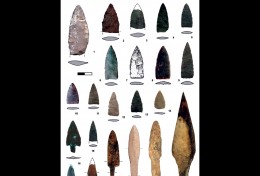Issue 3 (52)
| FESTIVE DECORATION OF SOVIET CITIES OF 1920–1930s | |||
|---|---|---|---|
| Year | 2016 | Number | 3(52) |
| Pages | 23-32 | Type | scientific article |
| UDC | 94(470)”1920/1930” | BBK | 63.3(2)61+77.562 |
| Authors | Barysheva Elena V. |
Topic | CITY: MYTHS AND SYMBOLS |
| Summary | The article deals with the importance of public outreach of the Soviet cities’ decoration during the the 1920–1930s on the occasion of national holidays of 7 November and 1 May. The official national holiday culture was an effective means of influencing the society. Visual propaganda of the unity of labor and national holidays, the society and the authorities, as well as uniformity of society during the celebrations was one of the tools for reshaping of the population’s mentality and their way of life. Based on the archive materials and media publications the author studied the approaches to decorating urban environment in its development. The attributes of the Soviet holidays: flags, decorative panels, portraits of the leaders, political posters, slogans, lighting, official stands contributed to the creation of a myth about the happy life and the “brightly lit road” to the future. Shop windows also had a “revolutionary-propaganda” importance and played a tremendous role in ideological education of the population. Decoration of the city streets and squares during the national holidays demonstrated the official interpretation of the past, present and future, implanted in the people’s minds the required stereotypes of perception of the environment. In place of the rich variety of styles in the decoration of urban space in the first years of the Soviet power there came a rigid official regulation. Centralized instructions and numerous methodological recommendations were supposed to turn the official holidays into a systematic self-education and self-discipline exercise. The need to attribute an emotional coloring to the image of a “new person” resulted in substitution of the rather primitive festive decorations of the “war communism” years with the splendor and the magnification of the 1930-s. Main element in the cities’ decoration was the demonstration of achievements of socialism construction and the strength of the proletariat. | ||
| Keywords | Public holiday, festive registration, attributes of holidays, ideological stereotypes, evident propaganda, political poster | ||
| References |
Бригада художников. 1931. № 2-3. С. 2-3. |
||
| Download in PDF | |||
















